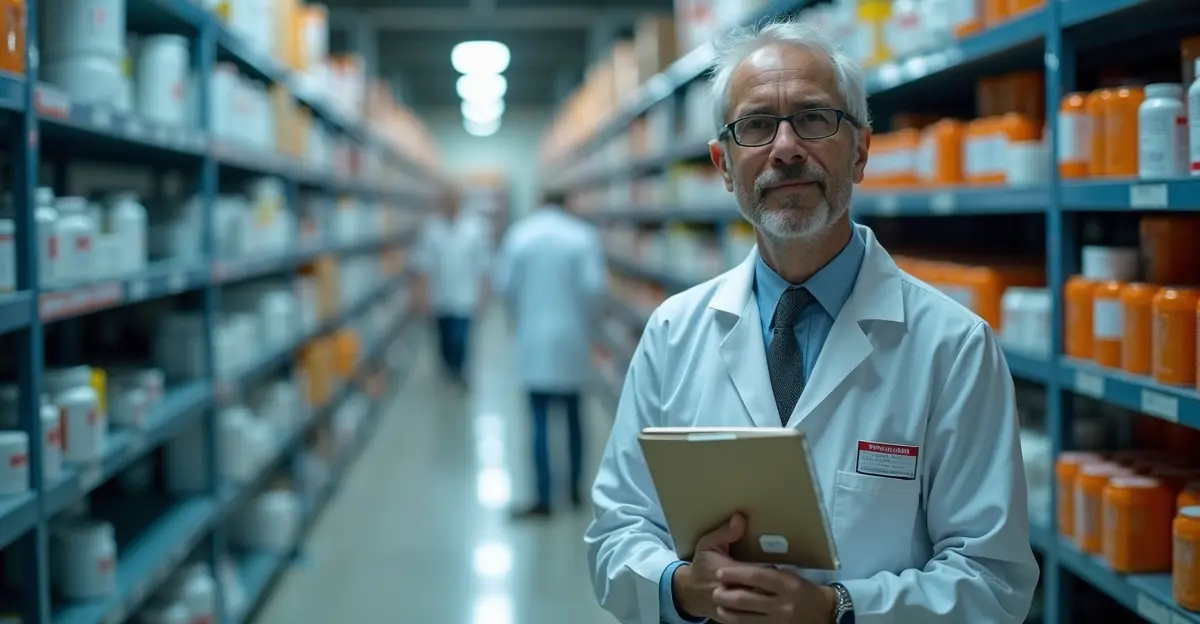Pharmaceutical supply chain shortages are worsening with 89% of 2024 shortages continuing into 2025. Essential medicines face disruptions from manufacturing issues and import delays, prompting government action including strategic reserves and domestic production incentives.

Critical Drug Shortages Worsen as Supply Chain Crisis Deepens
The pharmaceutical industry is facing unprecedented supply chain disruptions that are severely impacting the availability of essential medicines across the United States and globally. Recent data reveals that 89% of drug shortages from 2024 have carried over into 2025, with the average shortage now lasting over four years according to the latest Annual Drug Shortage Report.
Manufacturing Disruptions and Import Delays
The crisis stems from multiple factors including manufacturing disruptions, quality control issues, and significant import delays. 'We're seeing a perfect storm of challenges,' explains Dr. Sarah Chen, a pharmaceutical supply chain expert at Duke University. 'Natural disasters like Hurricane Helene damaged critical manufacturing facilities in North Carolina, while geopolitical tensions have created import bottlenecks from key supplier countries.'
The geographic concentration of manufacturing has proven particularly problematic. Currently, only 9% of active pharmaceutical ingredient (API) manufacturers are located in the United States, with 53% of brand drugs and 69% of generic drugs manufactured overseas according to FDA data. This heavy reliance on foreign sources creates vulnerability to disruptions from trade restrictions, political instability, and logistical challenges.
Essential Medicines Most Affected
The shortages are hitting lifesaving medications hardest. More than 40 critical drugs have been in shortage for over three years, with five medications including lidocaine and fentanyl experiencing shortages for more than a decade. Sterile injectables face the highest risk due to razor-thin profit margins that discourage manufacturers from investing in quality improvements.
'Patients are experiencing treatment delays, medication errors, and increased out-of-pocket expenses,' says Dr. Michael Rodriguez, an emergency physician in Chicago. 'When we can't access essential antibiotics or cancer treatments, patient outcomes suffer significantly.'
Government and Industry Response
The federal government has taken several steps to address the crisis. On August 13, 2025, the White House issued an executive order directing the filling of the Strategic Active Pharmaceutical Ingredients Reserve (SAPIR), which had remained nearly empty despite being created during the previous administration. The order mandates obtaining a six-month supply of APIs for approximately 26 critical drugs within 30 days.
The FDA is also implementing new initiatives, including the proposed FDA PreCheck program to accelerate new domestic manufacturing facilities. This two-phase approach involves facility readiness assessments and expedited application reviews to reduce the current 5-10 year construction timeline for new pharmaceutical plants.
Mitigation Strategies and Future Outlook
Industry leaders are implementing various mitigation strategies including geographic diversification of suppliers, enhanced inventory management, and adoption of advanced technologies. 'We're seeing increased investment in predictive analytics and AI to better anticipate disruptions,' notes pharmaceutical consultant Lisa Thompson. 'Companies are also building strategic stockpiles and developing alternative sourcing options.'
However, challenges remain. 'The profit pressures on generic drug manufacturers make it difficult to justify the investments needed for resilient supply chains,' explains Thompson. 'We need systemic changes to align financial incentives with supply chain stability.'
The FDA will hold a public meeting on September 30, 2025, to discuss onshoring manufacturing of drugs and biological products, seeking input on regulatory hurdles and incentives for domestic production. While comprehensive legislation appears unlikely without a major galvanizing event, stakeholders across the healthcare sector are calling for coordinated action to address what has become a persistent threat to public health.

 Nederlands
Nederlands
 English
English









